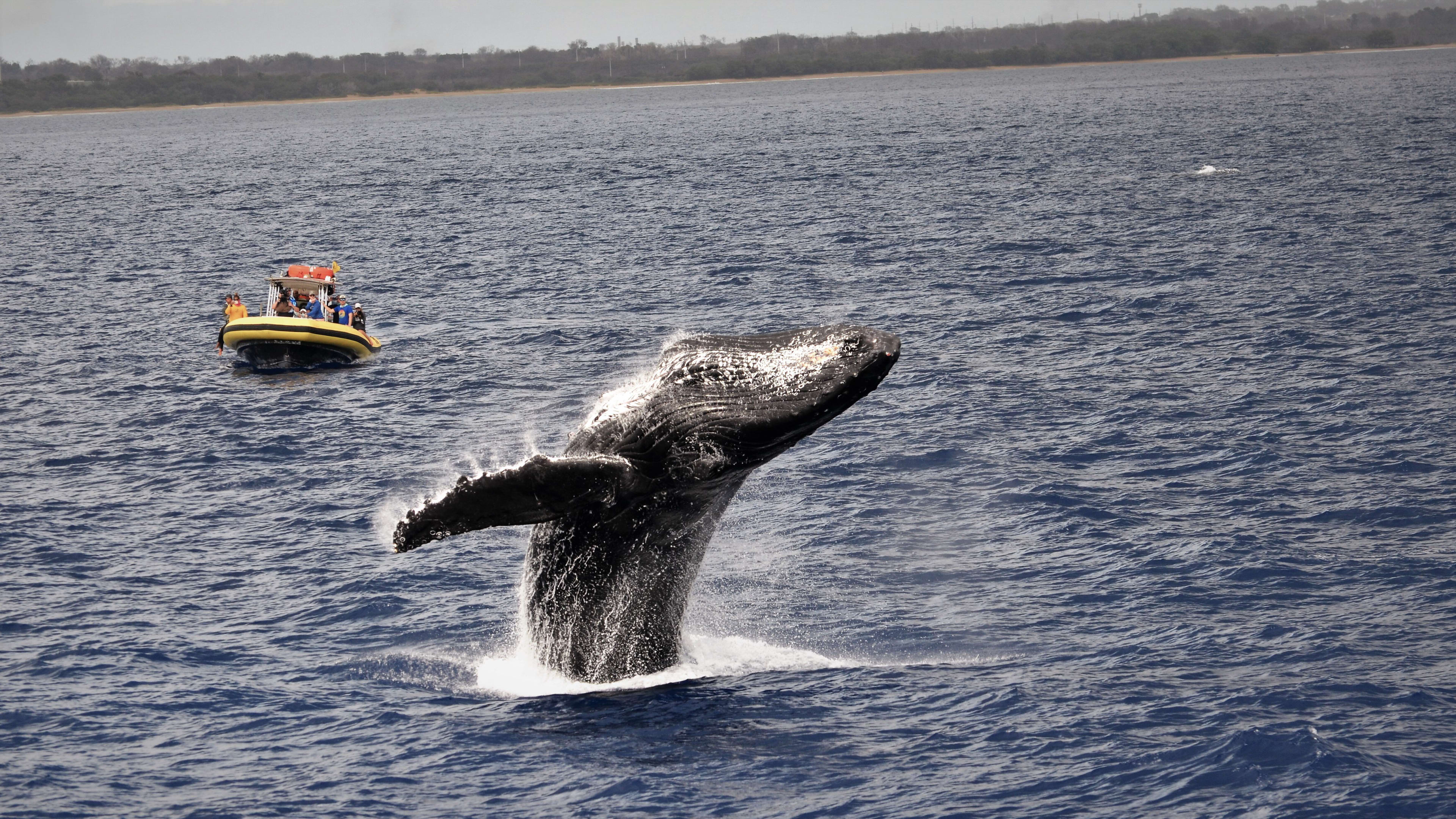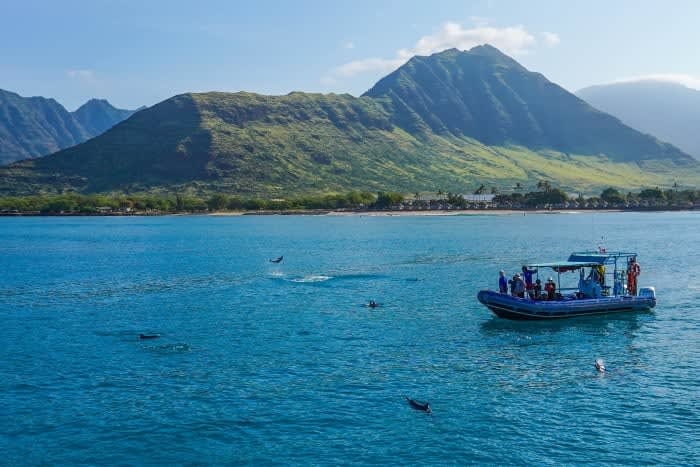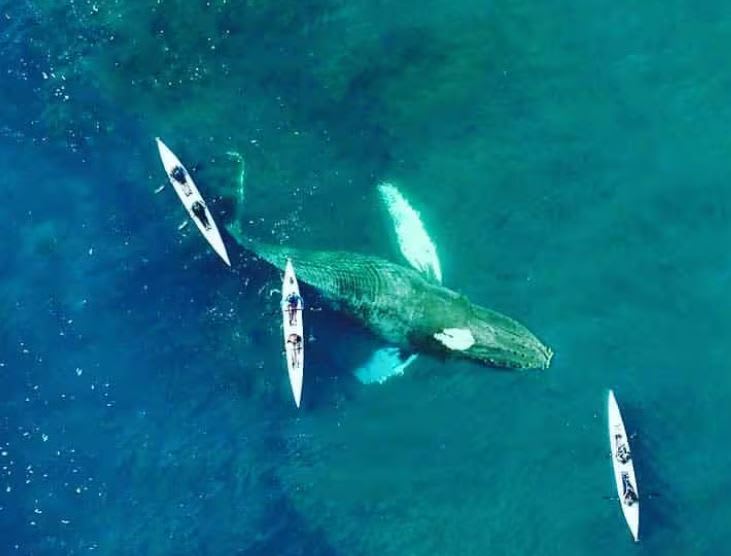
Complete guide to snowmobiling in Quebec
Do you love speed, thrills and the great Canadian outdoors? Then snowmobiling in Quebec is for you!

Whales are, at the same time, awe-inspiring sea mammals and mythical beasts with a storied past. Whale watching itself is a relatively new activity that has impacted the way humans see whales and ocean conservation. From its history to its key factors, discover the fundamentals of whale watching!

Whale watching, though today a beloved pastime, was not always met with such enthusiasm in the past, as it typically occurred at the helm of whaling ships bent on harpooning the thrashing sea monsters leading them on a frenzied chase! Yes, those sea monsters – the word ‘cetacean’ deriving from the Greek word ‘cetus’ meaning ‘sea monster'– were once symbols of fear and human livelihood.
In spite of the terror associated with them, whales have always been immensely useful to humans and have been hunted around the world for thousands of years. Traditionally, not only were whales captured as a food source, but their bones and baleen were also used to make tools. From Mediaeval times up until modern day, whale blubber became highly sought after to be rendered into oil to be used in oil lamps, soaps, fertiliser, machinery, and more, and was even used to make explosives during the world wars. Even up to the 1960s, around 70 000 whales were being hunted and slaughtered annually. By the mid 20th century, due to the replacement of whale oil by petroleum and the whales themselves being driven to extinction, commercial whaling was finally deemed illegal in 1987 by the International Whaling Commission, and though greatly recovered, whale populations are still on the rebound to this day.

Since the days of vicious whaling practices and general fear of these amazing creatures, society’s attitudes towards whales have come a long way. From the first time the general public heard a recorded whalesong in 1970 to Greenpeace taking up the fight for anti-whaling, whales have now become a symbol of conversation and environmentalism!
While whaling is now outlawed by most countries and cetacean captivity is widely regarded as inhumane, our fascination with whales has not diminished. Enter whale watching as a means of education, conservation, and shifting the global perspective on whales! The first known commercial whale watching spectacle took place in 1950 when the Cabrillo National Monument in San Diego was declared a public venue for people to observe the annual migration of grey whales, and by the turn of the century, commercial whale watching was growing in popularity around the world.
Not only have whale watching tours allowed the general public to connect to whales, driving whale preservation campaigns and practices, but whale watching tourism has also benefited many coastal communities, allowing them to profit from tourism instead of whaling practices and overfishing. Iceland is a prime example of this phenomenon, whereby traditionally whaling has been a significant part of Icelandic fishing culture due to the income it brought in, whale watching tourism in Iceland now generates more profit than whaling.
As far as whale watching has come, with its different methods, inclusion of onboard naturalist guides and marine life specialists, and even hydrophones that allow passengers to listen to whale songs, the introduction of too many whale watching boats, in addition to environmental concerns outside of the whale watching industry, are cause for concern over the health of our beloved cetaceans.
Though choosing to participate in whale watching is a wonderful way to get closer to nature, experience awe, and learn more about whales, it is best to choose a tour that prioritises the wellbeing of marine life. A few things to keep in mind when choosing tour operators include looking for those that adhere to whale watching guidelines for approaching and observing whales as well as ensuring minimal disturbance, the operator’s environmental practices both on board and within the community, tours with eco-friendly boats that minimises pollution, and an educational approach to whale watching where there is a specialist on board who will foster awareness and appreciation of whales.

From land: Whale watching from land can be a particularly fun experience, especially since it is more unexpected, and can be a great alternative for those prone to seasickness. Whale watching from land is particularly popular in Hermanus, South Africa, where Southern Right whales often come so close to shore that the town employs a ‘whale crier’ who blows on a kelp horn to alert passers-by of whales nearby!
By kayak: Whale watching by kayak is for the brave and adventurous! Not only is kayaking already a fun and sportive activity that gets you closer to the ocean, your un-intrusive proximity to the water allows for exciting encounters with marine life such as whales. When kayaking with whales it is important to stop your approach at a distance of 330 feet/100 metres, never chase or harass the whales, and be careful not to surround or separate a group of whales. Though they are large and powerful, whales are not naturally aggressive towards kayaks or people, and it is also unlikely for a whale to collide with a kayak. Check out a sea kayaking adventure in Cape Town, which, when done during peak whale seasons, may offer the chance to see these gentle giants right from your kayak!
By boat: The most popular method of whale watching is by boat, by which passengers are carried out to sea to catch sight of whales that are not typically seen closer to shore. Whale watching boats are typically large enough to carry multiple people but also need to be quiet enough to not spook or disturb marine life. They will often have large deck areas for outdoor viewing as well as shade and seats for comfort. Inflatable RIB boats are a variant of whale watching boats that are small, fast, and close to the water. Though these types of boats provide less amenities than a larger boat, they are able to cover more area which can mean more whale spotting opportunities, and their closeness to the water provides a more intense experience as well. For a traditional whale watching boat tour, check out this option in Tadoussac, Canada, and for a RIB option, see this whale watching tour in Reykjavik, Iceland!
Whale watching by boat is the most comfortable way to watch whales and other sea creatures, and boats also have room for marine life specialists for an extra enriching experience, and sometimes even a hydrophone – a device that allows you to hear live whale songs from the deep blue right under you! A great whale watching option that offers both a naturalist onboard and a hydrophone is this whale watching tour on Hawaii’s Big island.
From sea monsters to benevolent behemoths, whales have come a long way in the minds of humans. In fact, it was only very recently, at the end of the 80’s, that whale hunting became illegal, but there are still certain countries who practise whaling for commercial and cultural reasons. However, as we continue to learn more about whales, the more fascinating these creatures become and the more we strive to protect them. At its core, whale watching generates a deep respect and empathy for whales, and more than anything, that is exactly what we need to continue to foster if we want to move forward in our efforts to protect and save the whales.